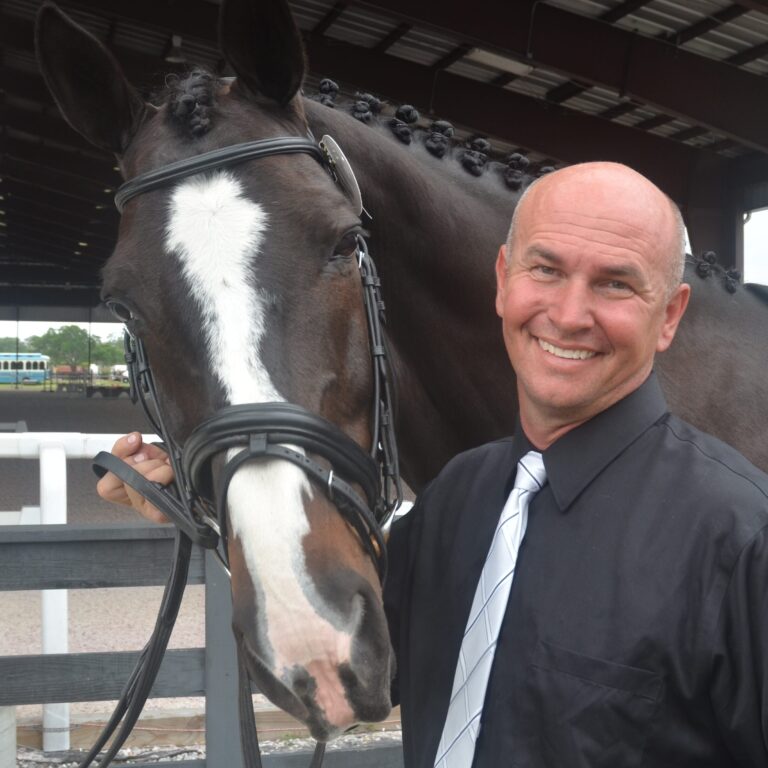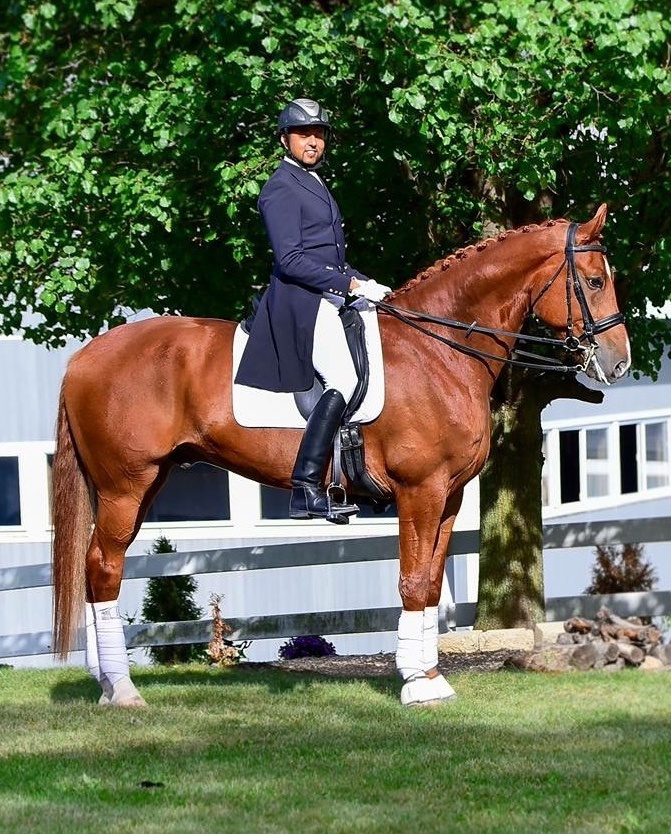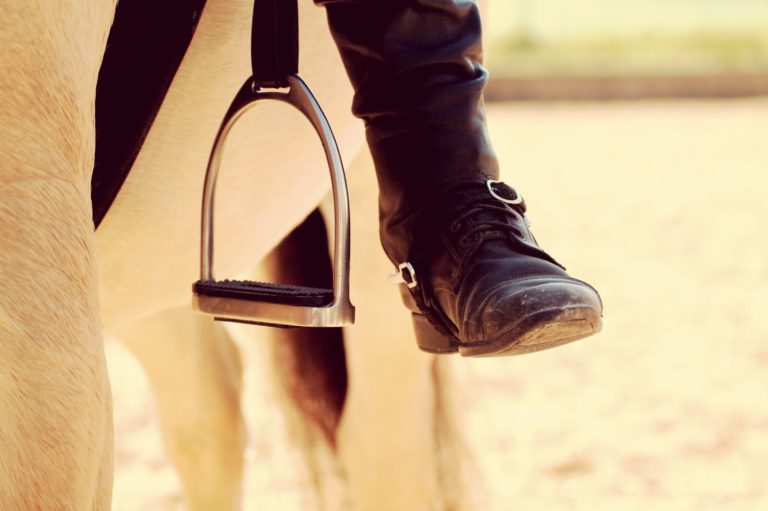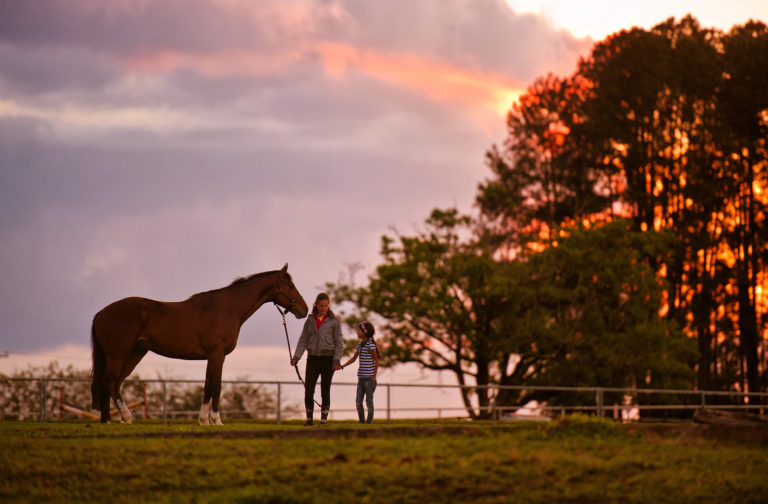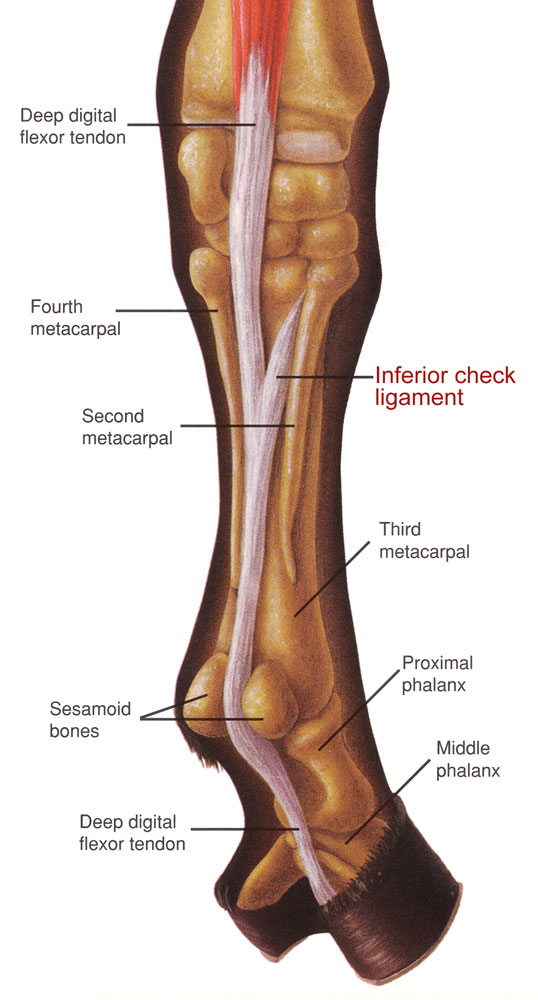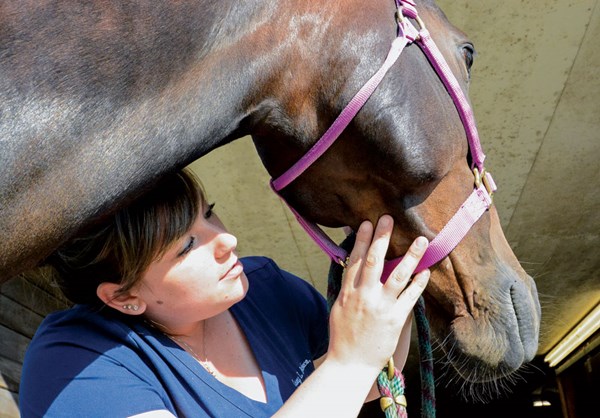In your mind you can picture your perfect dressage horse. His size and color and how he moves. Then you try to find him and suddenly you’re overwhelmed by all of the choices. Even more frustrating, you come upon what you think is “the one” only to discover some fatal flaw. To further muddle the process, there are choices that aren’t what you’re looking for but are “such a good deal!” Welcome to the world of horse shopping and buying.

I had such a clear picture of my dream horse that when my friends first saw her, they simultaneously exclaimed “That’s Sandra’s horse!” Charisma exceeded all of my expectations, until one day she went for a simple surgery and came back lame. It was time to find another partner. One year later, I had four “maybes,” repeated disappointments and two failed pre-purchase exams. It forced me to re-think the horse buying-process. As a top executive recruiter, I successfully found my clients just the right position through a method I called “the wish list,” so I used it to find my perfect horse. Here’s what I did:
Start with a Big List
As if you’ve been granted wishes by a genie in a bottle, write down every quality you want your new horse to have: ideal color, size, age and gender. Describe your “to die for” gaits. What personality would suit you to a T? Look on the Internet (just don’t pick up the phone yet.) What ad details get you excited? Look at horses at local shows and note the qualities that catch your eye.
When you list what level you want the horse to be at, get specific on what you’d like to see within that level, as well, like a great stretchy circle, an amazing medium trot or flawless flying changes. Do you want a show record? Professional training? Are you looking for a lower-level horse to trade in later for an upper-level mount? How about a long-term partner to develop through the FEI? Perhaps you are ready for Grand Prix or need a schoolmaster to further your education. What conformation does he need to perform as you wish? A lower-level horse might get by with stiffness in his hocks, where an FEI prospect better be able to “sit.”
Think about the horse’s you’ve ridden in the past. What did you love, hate or wish you could change? Consider characteristics like willingness to work, athleticism and rideability. Are you delighted with a horse that goes so forward you have to half halt often to keep them balanced, or are you more comfortable with a quiet horse you have to urge on? List adjectives that truly capture your ideal partner’s personality—feisty, laid-back, dependable, smart? Do you want an affectionate buddy or a self-sufficient superstar (or both)?
Be sure you look at what is underneath your wishes. For example, you might list “non-spooky,” when in actuality you might not mind a horse looking at new things, you just don’t want one who is always tight with nervous tension. Or you might list “gelding” when you would consider a mare that has no issues during her cycles. Be sure to consider your goals. Do you want to show locally or be competitive at the national level? Maybe trail ride as well? Will this horse be yours for a while and then be passed on to your teenage daughter?
Now look over your list, and add the price tag you would consider reasonable for a horse that has everything you’re looking for. Also, note how much time you’re willing to commit to the search.
Find Your Top 10
To make your list more manageable, combine similar traits into categories like appearance, personality and talent. Then divide it into categories like appearance, personality and talent. Then divide it in into three sections: must-haves, preferences and bonuses.
The must-have section contains items that are non-negotiable. Unless you are fortunate enough to have an unlimited budget, include the most you are willing to spend, including the costs of a trail visit, the pre-purchase exam and shipping. If either time or money limits your travel, add your restricted search area.
Divide the rest of your list realistically into what you really need and what would be icing on the cake. Do you really require Third Level or would a fabulous Second Level horse schooling clean changes be fine? Perfect health is ideal, but what about manageable issues. Your riding skills must influence the final list. You might love a lofty trot, but can you sit one? Your budget may have you looking for a young horse, but do you have the experience to train one? Answering these hard questions honestly now will save you a lot of disappointment later.
Stick to Your List
Unfortunately, many job seekers end up in the wrong position because they were so anxious they accepted the first offer or were so wooed by the interview “courting” their ideals got thrown out the window. After all, it feels great to be wanted (or to see yourself winning blue ribbons), and we usually want what we want yesterday. Your wish list will keep you from these pitfalls, as well as determine what questions to ask the seller, especially the hard ones that need to be asked before you fall in love.
You can drive yourself crazy (and spend a lot of your budget money) by trying out every horse that excites you. Remember, there are thousands of horses for sale, but you only need to find one. Keep a notebook with copies of each ad, and include a checklist with your wish list for each horse. As you gather information, fill out each checklist and start to order your prospects by which is the best match. Use the Internet to gather information like riders/trainers they’ve had, show records, etc.
Know Before You Go
If your checklist indicates a good prospect, you can save yourself a lot of time, money and trouble if you are willing to ask tough questions early on: Why is the horse for sale? Does he have any vices, health issues or training problems? Listen carefully when the seller is talking. If anything doesn’t feel right to you, ask more questions until you are satisfied with the answers or walk away. Keep in mind that big price tags don’t ensure quality and deals that “sound too good to be true” most likely are.
Ask for a recent video of a typical training ride that covers as much as you’d see if you were there in person. Be sure the horse is working at the level he is purported to be.
If all has gone well so far, it’s time to take a closer look inside and out. Ask for conformation pictures, a copy of health records and X-rays for your to review with your trainer, vet and farrier. This information can reveal deal-breaking problems before a pre-purchase exam.
Control the Pre-Purchase Exam
Be sure to speak to your veterinarian prior to the exam. Discuss your future plans for the horse, any concerns you have and which X-rays you should take. As pre-purchase exams can be quite costly, you can and should dictate the order and content of the exam. If you’ve seen anything you weren’t sure about on the conformation pictures or X-rays, begin with that. If that issue becomes a deal breaker, you can stop the exam and save yourself some money. Remember a perfect exam is rare. Its purpose is not for the vet to pass or fail the horse but to provide you with enough information to make an educated financial decision.
If you’ve done your homework and stuck to your list, your trial visit shouldn’t involve any big surprises. Preferably all that is left is for you to see how you feel when you are finally in the saddle. So grab your checkbook and say a little prayer. Hopefully after you’ve ridden a time or two and you get that first nuzzle, you’ll know without a doubt that you’ve found your perfect partner.
This article first appeared in the September 2010 issue of Dressage Today magazine.
If you’re ready to buy or sell your next horse, visit Dressage Today’s sister site Equine.com.




